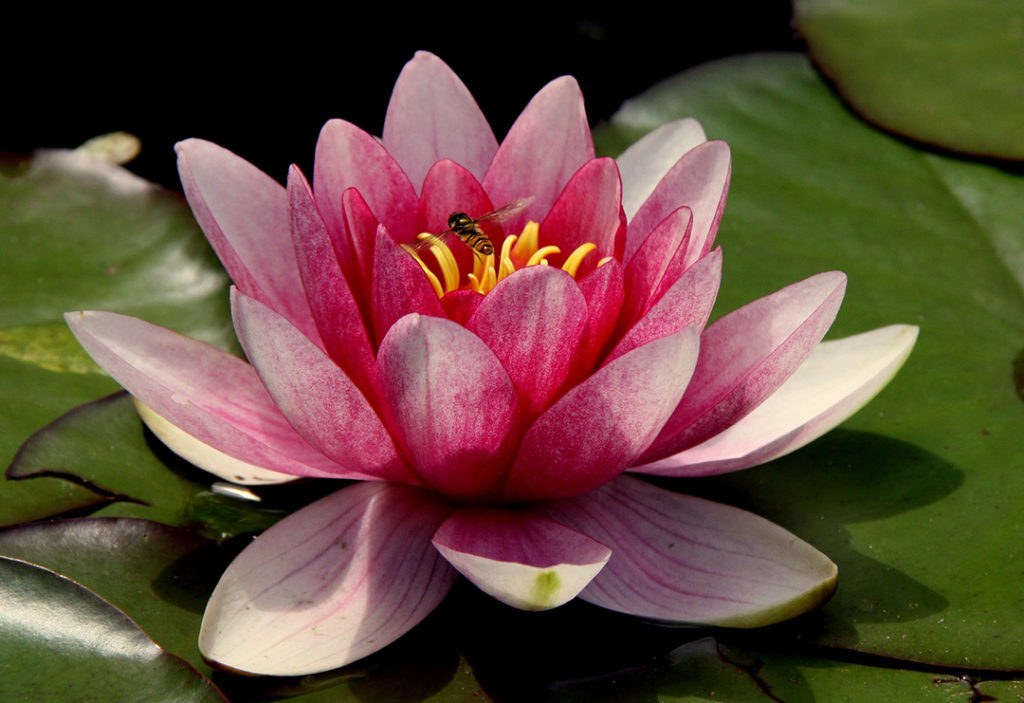
Cambodia
Lotus
Nymphaea

General Description / Cultural Significance
Lotus is the national flower of Cambodia. The figure of Buddha sits symbolically on the flower in both Hindu and Buddhist traditions. Every pagoda is accompanied by a lotus pond and there are many images of the lotus carved in the temples and on inscribed on the pages of famous literature of Cambodia. The flower is one of the most abundant species in the country, naturally taking root in lakes, rivers, ponds, and even roadside ditches. Where it does not grow, Cambodians who love the pink and white blooms plant them. When the lotus flower blooms above murky waters, it is said to symbolize enlightenment and purity. Depending on the variety, the sweet lotus fragrance can be soft and delicately sublime, or intense and heady. The flower is a part of all religious events and culinary feasts.
All parts of the lotus—roots, stamen and petals—are used in medicine to stop bleeding, and to heal coughs and stomach problems. They contain chemicals that decrease swelling and reduce blood sugar too. The existence of lotus flowers goes back millions of years and Cambodian cuisine, one of the world’s oldest continuing cuisines, uses lotus among its spices and harmonious arrangements of flavors, textures, and temperatures. The leaves of the lotus are used to wrap vegetables and sometimes are a substitute for a hat. The lotus root has a crisp texture similar to jicama but can be cooked further to become sweet and sticky and resemble potato in texture. Seeds are eaten as a popular snack and the flowers themselves are edible raw and are often used like a cup to hold and serve food. The petals are also made into a fragrant tea and an infusion.
Climate Change/Conservation Status
In Cambodia, the monsoon has become less predictable, and there is more flooding and longer droughts. Traditional wisdom about when to plant and harvest is no longer reliable. Palm trees have provided the culture with massive contributions to the livelihoods of Cambodians (80% of the population depends on palm sugar production and other agriculture) and its enduring power as a symbol for Cambodian culture. The population has been cutting down the trees to make ends meet. Although the government has issued a ban on logging palm trees for sale, clandestine cutting continues, as does the deterioration of the ecosystems.
This situation is further exacerbated by the effects of climate change, which have recently been experienced with uncharacteristically dry seasons and fundamental changes in the water cycle. The loss of the sugar palms— and their deep roots systems that provide natural erosion control—means that their country is more vulnerable to the effects of flooding. The importance of the role that the sugar palm tree plays in the small, integrated farming systems of the country and the livelihood of the small farmers cannot be underestimated or overstated.
A study published in 2017 has found that rapid loss of the dense forest cover is directly linked to an increase of illness in children. A loss of 10 percent of forest around Cambodian households equates to 14 percent increase in diarrhea, acute respiratory infections and fevers. The effects of deforestation have become a key factor in child mortality in Cambodia.
The country recently implemented a national strategy to establish more resilience and better prepare for the impacts of climate change intensity.
Alternate Names
Sacred lotus
Water lily
Sources
Bopha, P., 2015. Underprepared Cambodia Vulnerable to Climate Change. VOA News. [website]
Huot, C., 2003. As national symbol, palm trees inspire pride and profit. The Phnom Penh Post. [website]
Pienkowski, T., et al., 2017. Empirical evidence of the public health benefits of tropical forest conservation in Cambodia: a generalised linear mixed-effects model analysis. The Lancet Planetary Health. DOI: 10.1016/S2542-5196(17)30081-5.
Royal Embassy of Cambodia to the United States of America, Washington, D.C. This statement can be found on the World Sensorium original website.

